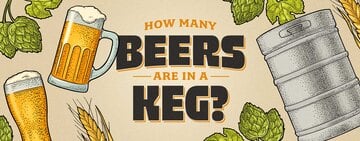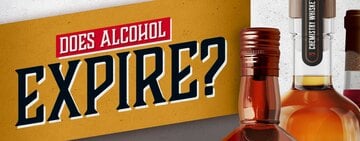
Setting bar drink prices can be a challenging part of managing a bar. Customers may be deterred by overly high prices, but the business will struggle to thrive if prices are too low. Factors such as rent and overhead costs need to be factored in when determining pricing, along with industry standards that can guide you in setting the right prices for your establishment. Use our guide to calculate drink prices at your bar to encourage purchases and maintain a steady profit.
How to Price Cocktails

Pricing cocktails and other drinks requires a few simple equations. When considering how many different types and brands of liquors are used, follow these steps to help you estimate the price of the drinks at your establishment.
- Liquor cost calculation: Bottle Price / Ounces in Bottle = Liquor Cost per Ounce
- Pour and beverage cost calculation: Cost to Make the Drink / Price You Sell It for = Pour Cost. Industry-standard pour costs range between 20% to 25%, but adjust the percentage to match your business.
- Drink price calculation: Liquor Cost / Pour Cost in Decimals = Drink Price
- Add garnish prices: Some bars calculate the cost of each ingredient and price them accordingly, while others set a flat rate and add it to the cocktail price.
- Calculate shrinkage variance: Most bars will add an additional fee of approximately 20% to cover the cost of lost products due to expiration or damage.
- Round total price to the nearest quarter: To make the calculated price more visually appealing, round to the nearest quarter to create a cleaner drink menu.
- Evaluate and adjust: The prices you come to may not always be the most cost-effective price for your demographic. You can use a profit and loss statement to make adjustments and track the impact it has on your clientele to find the best menu pricing for your establishment to be profitable.
Drink Cost Calculation Example
We walk through the pricing breakdown of a basic drink to provide a visual of the calculation above. In this example, a 25-ounce liquor bottle costs $22.
- Liquor cost: $22 purchase cost / 25 oz. per bottle = $0.88 per ounce
- Pour cost: We’ll use 20%, or 0.2, as a standard.
- Drink cost: $0.88 liquor cost / .2 pour cost = $4.40
- Garnish cost: We’ll use a flat rate of $0.50. Therefore, $4.40 + $0.50 = $4.90
- Shrinkage cost: We use the shrinkage rate of 20%, or 0.2. Therefore, $4.90 drink total x .2 shrinkage = $0.98 shrinkage cost.
- Final calculation: $4.90 drink total + $0.98 shrinkage cost = $5.88 new drink total
- Round to the quarter: The final drink price is $6.00.
Drink Pricing Tips
Experienced professionals use several tricks to help them accurately determine drink prices, specifically regarding recipe and pour costs. While most locations will set the pour cost at 20% to 25%, others will use 22% for wine, 20% for beer, and 14% for liquor. You can adjust the percentage to what works best for your establishment.
Since most drinks do not consist of just one type of liquor or ingredient, price out your ingredients the same way you calculated the liquor cost and add them all together. Multiply the liquor cost according to how many ounces of that particular liquor you used in the cocktail. Then, use that recipe total instead of the liquor cost during the drink cost step.
How to Price Liquor

Liquor pricing is determined by a four-tier organizational system that allows you to adjust your pour cost according to the liquor quality. Organizing your bottle brands into these four categories can provide a quick reference system when setting drink prices.
- Well: These brands earn their name because they sit in the well behind the bar. Well drinks are made with the cheapest liquors in your establishment and traditionally mixed with multiple liquors and drink mixes. They will have the highest pour cost, set at approximately 30%.
- Call: These brands are the most popular in your establishment and are usually located directly behind the bartender. Customers can generally call them by name when asking for a drink. They will have a pour cost set at approximately 25%.
- Premium: These brands will usually be located on the lowest shelf behind the bar and will be the highest quality certain brands have to offer. They will have a pour cost set at approximately 20%.
- Super-premium: These brands are considered top-shelf bottles and will be the liquors with the highest quality in your establishment. They are generally liquors that have been aged and distilled. They will have the lowest pour cost, set at approximately 15%.
Creating Standard Recipes
Establishing standard recipes for each drink is important to ensure consistency and quality. If each bartender makes cocktails differently, your customers receive different types of margaritas and your effort to price the beverage is essentially useless.
When standardizing recipes it's also important to stress the necessity of avoiding over-pouring to your bartenders. Over-pouring costs bars thousands of dollars annually, but you can help prevent that by adding measured pourers behind the bar.
Factors That Impact Drink Prices

Drink prices are impacted by factors besides their ingredients, such as your location and competition.
Demographic
Setting drink prices goes beyond calculations. Consider your location’s demographic to set prices your customers will accept. Consider the age, gender, occupation, and income of the people in your surrounding neighborhood.
If your bar is in a bustling city with higher rent rates, customers may accept and expect higher-priced drinks. However, if you’re in a rural town or near a college community where the population has lower available income, higher-priced drinks won’t sell very well. Evaluate how your customers respond to your drink prices by tracking your bar sales and adjusting your prices accordingly.
Checking Out the Competition
Knowing your competition's pricing and promotions is vital to your success. If your drinks are priced significantly higher than the bar around the corner, you might slowly lose business and see financial effects. Vice versa, bar drink prices that are too low won't cover the costs of staff, rent, and electricity. Many bars choose a technique in which they try to meet the prices of their competition or beat them if possible.
However, not all bars are the same. If your bar or restaurant features an upscale ambiance, customers will expect your drinks to be the same price as the casual dining bar around the corner. Your atmosphere will also impact the discount of your happy hour drinks if you choose to have a happy hour. A sports bar serving a happy hour may see a 30% pour cost, while an upper-class martini bar keeps its beverage cost at 18%.
Determining your pricing will be influenced by factors such as the cost of alcohol, market competition, target customer base, and desired profits. Proper calculation of drink prices is a cornerstone of your establishment's success. Strive to strike a balance and set reasonable prices for your food and drink menus to keep happy customers returning.





